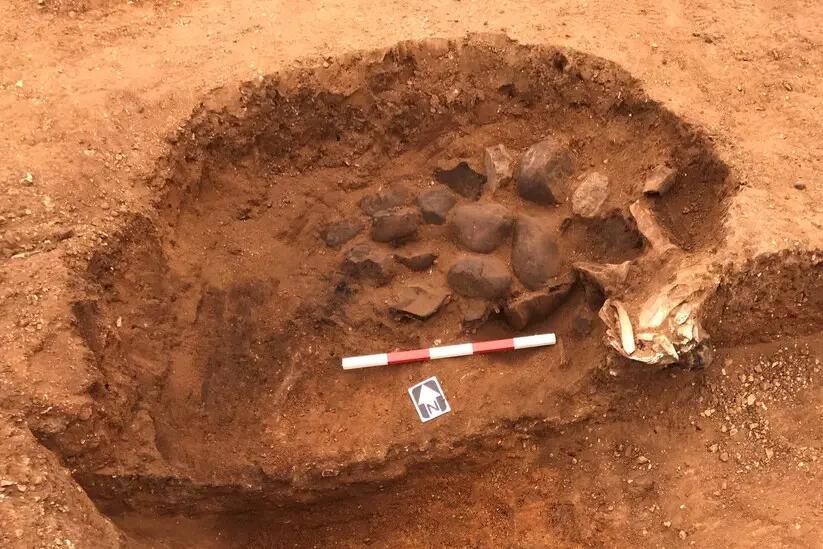Food and drink
Discover the diets of Iron Age and Roman Bedfordshire & Cambridgeshire...
By using several different techniques, we identified some of the food and drink that made up the diet of people who used to live in this area. This included looking at the animal bones left behind, as well as studying tiny grains and pollen.
Britain 2,000 years ago didn't have rice, pasta, or potatoes. Bread was the main source of carbohydrates for people in these settlements. We discovered evidence for the production of bread in the shape of quern stones, big stones with a dip in the middle that were used to grind grain into flour.

In one settlement we also found a Roman ‘corn dryer’ – which dried grain before it was stored or ground into flour. However, when we looked at some of the charred grains found there, we could see some had germinated, or started to put out roots.
This suggested that at least some of the grain was being used to make malt, the first step in producing beer.

We also got a glimpse into how people ate!
In this pit, we found the bones of cattle and either sheep or goats. We know people in the Iron Age usually ate meat from cattle, sheep, and pigs, so this matches up with what we might expect. These bones were analysed by our specialists to see if they could spot butcher marks, where the meat was cut off the bones.

Later on, with the arrival of the Roman empire, these settlements had access to the vast trade network, which brought more food options. On one settlement, we found pieces from a storage container called an ‘amphora’ which may have held olive oil. People here were eating food produced thousands of miles away!